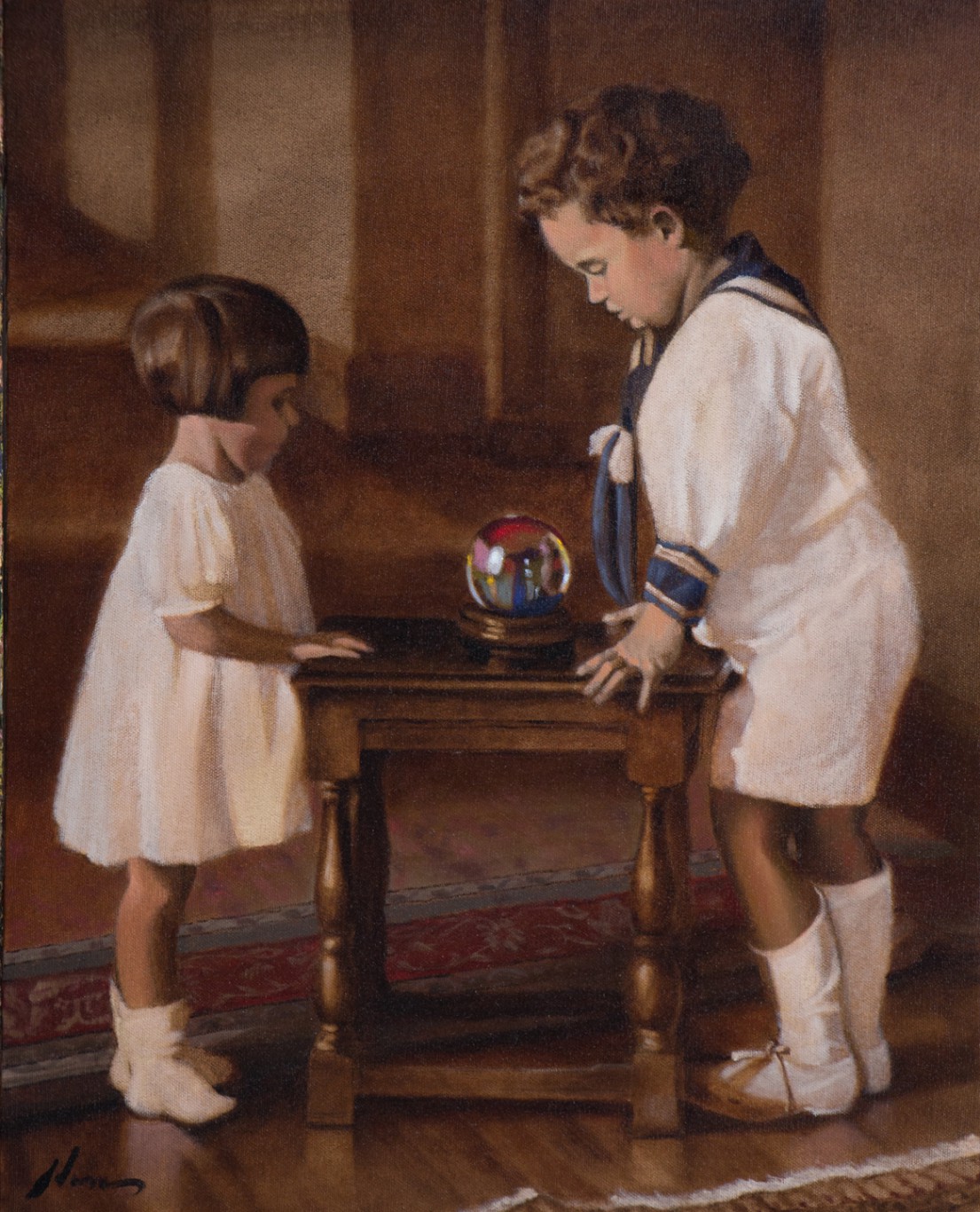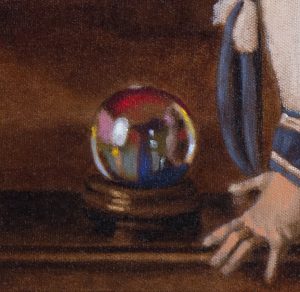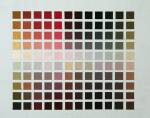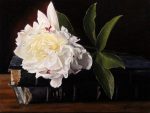Painting How To
Crystal Gazing and a Limited Palette

Why use a limited palette? Before I get to the limited palette, let me give you a little background for this painting. Going through old family photographs recently inspired me to reinterpret them in paint. It has become a special way to reconnect to some really wonderful people. For example, here is my aunt Lois, we called her Lolo, and my father, Richard in 1927. They were Americans both born in Paris, France during the 1920s when my grandfather, Lewis Adams, was studying architecture in Paris at the École des Beaux Arts. Grandpa became a very successful architect with his office in New York City, my father a theater arts professor in California and founder of several influential local and national arts organizations. Lolo was an accomplished pastel artist in Maine.
I love this photo which was probably taken by my grandfather. The kids look so sweet all dressed in white. Two-year-old Lolo in her pretty dress, and four-year-old Dad in his sailor suit. But scuffed and dirty shoes give away his mischievous nature. You know he couldn’t wait to get out of the suit and back playing in the dirt.
I wanted to add a little fantasy to this image and this is the story of what I did.
Why a Limited Palette?
A limited palette refers to when an artist paints with just a few colors rather than more common array of more than a dozen. Swedish master Anders Zorn (1860-1920) is famous for his use of a palette limited to four colors – red, yellow ochre, white and ivory black. (You can learn more about Zorn and his palette in this article I wrote a while back).
Why use a limited palette?
- More easily paint with more harmonious colors.
- Trains you to think primarily in terms of value (relative lightness and darkness). This is super important because we use relative values far more than color to see and understand the world.
- To enjoy the challenge of creating interesting paintings without relying of brilliant color.
- My personal choice – Because it’s fun!
Using a limited palette for this painting simply made sense. Not because it was based on a 90-year-old black and white photo. Because I love to imply a story in my figurative paintings and I wanted to add fun and fantasy to a muted environment by contrasting it a few small sparks of rich color in the crystal ball. So I reduced my regular palette of fourteen colors to five colors; Burnt Umber, Cadmium Red, Yellow Ochre, Ivory Black and White. OK. Seven. For the crystal ball I added the tiniest bit of Ultramarine Blue, and Cadmium Yellow.
Here is a quick step-by-step on how this painting was created:

Underdrawing, Tone and Lift – upper left image
Following my normal practice, I made a relatively detailed freehand drawing directly on a primed canvas. I used a soft 2B pencil for the drawing which I sprayed with a light coat of retouch varnish to keep from smearing as I continued to work the surface of the painting. In a few minutes the varnish was dry. I then spread Burnt Umber thinned with fast drying medium (no mineral spirits) over the entire surface. Using paper towels, Q-tips, and dry brushes I scrubbed off and blotted the Burnt Umber to create the underpainting. That technique is call lifting.
Establishing the Darks – upper right image
Painting in the darkest darks with burnt umber, I focused on the shadows under objects making them appear more anchored to surface they stand on. With the other darks areas they created a rhythm of dark and light shapes that dance to create interest and lead the eye around the painting.
Refining and Details – lower left image
Details were then added along with refining edges and building up the lights. I kept the paint thin and transparent which adds a little more energy to the color. (Sorry, photographs don’t capture the effect of transparent colors very well). I love transparent colors especially when the shadows contrast by a more opaque handling of the light areas and highlights. I used a scumble technique for building up thin layers of tinted white paint applied with a very dry brush with a light random motion. The highlights are created with larger amounts of paint brushed on in deliberate single strokes or dabs.
Color, Details, and Tints – lower right image and below
I then focused on detail and a final balance within the painting by looking for areas that just didn’t work and correcting them whether it was the drawing, value, color or brush work. Once satisfied I set the painting aside for a couple weeks to allow it to dry. When dry to the touch, with color liberally thinned with medium, I applied a thin layer of warm tint to the flesh tones, and some blue tint to the my father’s uniform. I also added stronger, reds, blues and yellows straight from the tube to the crystal ball to give it a stronger punch of bright color.
Finished:
Looking into the Crystal Ball 1927
20×16 inches | oil on canvas
Please let me know what you think.
If you like this post or have questions or comments please let me know, below.





Michael,
I love the idea of using old B&W photos to create a painting, and it makes sense to use a Zorn palette for that. Thanks for sharing your process, very helpful to new oil painters like myself.
Your welcome. I really like using a limited palette. I use it often on early stages of my paintings because in if forces me to think in terms of light and dark values unencumbered by color mixing.